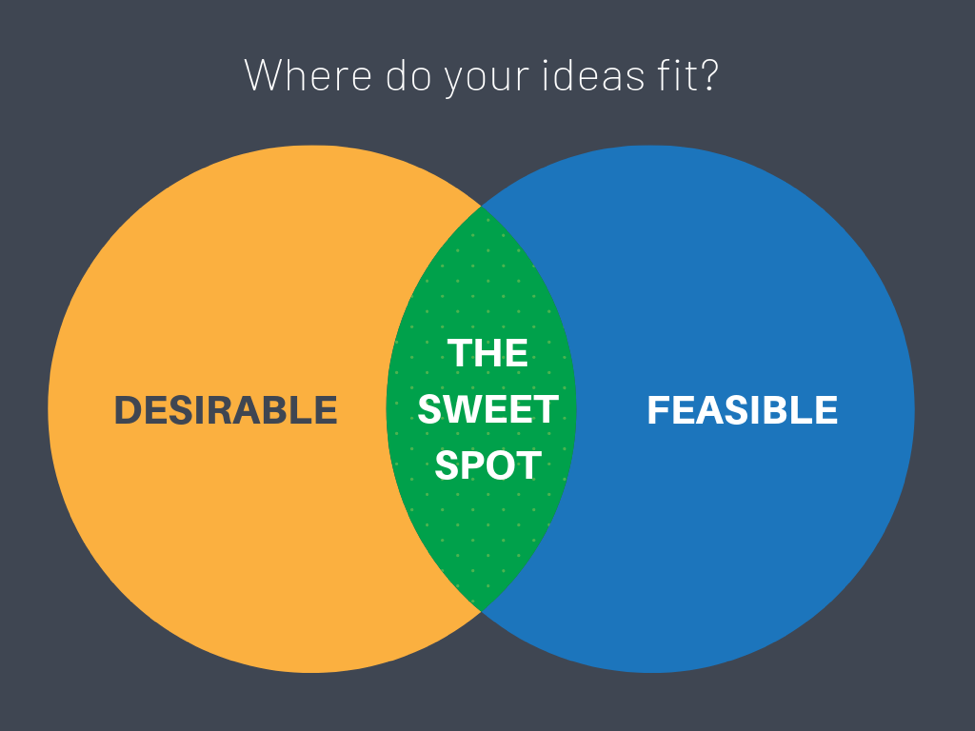
Since Project Based Learning involves answering an open-ended challenge or question, students will inevitably need to leverage brainstorming strategies during a project to consider possibilities and develop ideas.
However, some suggest that we’ve been completely missing the mark with brainstorming, and I tend to agree with many of the assertions.
My first few attempts at facilitating brainstorming sessions with students yielded lackluster results. That’s my diplomatic way of saying that they were painfully lame and uninspiring.
To be clear, this was not the students’ fault but mine as the facilitator. I hurriedly formed teams, gave them a bunch of brightly colored markers and chart paper, cranked up some energetic music, and I even yelled out cliché catchphrases like, “Be creative!” and “Encourage wild ideas!”
But, at the end of those sessions, we often had little to show for it (aside from all the wasted paper).
With all the encouragement I gave to everyone to blurt out any and all ideas, only a few dominant voices contributed. In fact, my approach seemed to cause a lot of creative paralysis or even intimidation with some students.
After some research and a few rounds of piloting alternative approaches with my classes, I eventually landed on four steps that made brainstorming in my PBL classroom an investment of time and not an unproductive expenditure.
Here are four steps to better brainstorming.
Step 1: Focus Before You Flare
Before students can start thinking divergently, they need to know and precisely understand the goal. One of the best ways to draw focus is to have a compelling and actionable question to initiate ideation. Many of my students gravitated toward the following template to establish their North Star: “How might we...?”
Here are a few examples of focus questions my students created in past projects:
- How might we inform our community about local issues that are being ignored?
- How might we use repurpose discarded materials to help others?
- How might we build a better skateboard that won’t break so easily?
- How might we use art to honor living legends in our community?
Once students have their focus, they can more effectively ideate with confidence and clarity.
Step 2: Seek Solitude
This change in my practice caused the most positive impact with brainstorming. Instead of jumping into a collaborative session with little or no preparation, I decided to explore a different approach that others were finding useful: individual time first. In the book Quiet: The Power of Introverts in a World That Can't Stop Talking, Susan Cain makes the case that introverts need processing time to more capably collaborate and contribute. I found this to be especially true with my students, and it helped curb the trend of brainstorming sessions favoring only the most extroverted voices.
Step #3: Provide Equitable Structures (And Maybe a Little Silence)
To maintain a clear direction and ensure all students have a voice, I prefer structure over more unregulated approaches for collaborative brainstorming sessions. There are a number of strategies and protocols that I’ve tried for this step (ex. Chalk Talk and Carousel Brainstorm), but I’m particularly fond of a silent brainstorming strategy that was developed from a fellow PBLWorks National Faculty, Dori Berg. That’s right, silent brainstorming. That seems to fly in the face of conventional brainstorming wisdom, but stay with me. It’s called “Rip, Slap, Pass!” – let’s break it down:
Rip: To begin, students are seated around a table with one stack of sticky notes placed in the center. Using ideas previously developed during the individual think time as an encouraged scaffold (flexibility is added so students can also add ideas that spontaneously arise), one student begins the process by writing an idea on a sticky note. After writing the idea, the student rips the sticky note from the stack.
Slap: With the idea ripped from the stack, the student then slaps (gently) the sticky note on the table.
Pass: The student then passes the sticky note stack to the person to their left to restart the process in a round-robin format. Students continue this rapid ideation for as many rounds as possible in a timed format (e.g., 7 minutes).
I love this simple process, because students come to the session better prepared, derailing is limited, and equity is at the core. Plus, the silence can be liberating.
As an added modification, consider taking a break during the session and return. Research suggests breaks help increase the effectiveness of brainstorming and can generate a much richer collection of ideas for our final step.

Step 4: Harvest & Prioritize
Student teams are now ready to make sense of all the ideas that have been generated from the brainstorming session(s).
Harvest: Students organize and cluster any similar or connected ideas. They don’t get rid of the other ideas; this step is here to simply help teams identify emerging trends while also still honoring those that are not easily grouped. At this point, all ideas still have merit.
Prioritize: Students elevate potential ideas to carry forward in their project using the lenses of desirability (it’s an attractive and potentially meaningful option) and feasibility (we can realistically achieve this). The ideas that meet both criteria may be given priority but are not necessarily the final or best option. For example, an idea that meets only the desirability criterion but is not initially feasible could achieve the “the sweet spot” with some refinement. Through voting and a collective consensus, students identify and move forward with the most promising ideas (usually 1-3) to prototype and refine.

